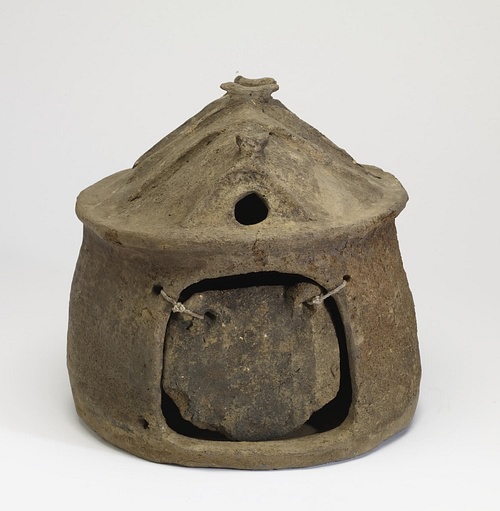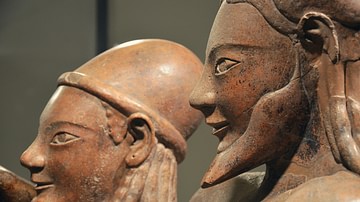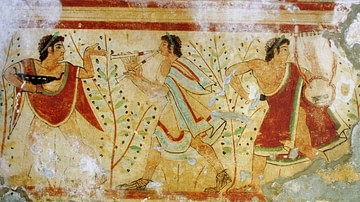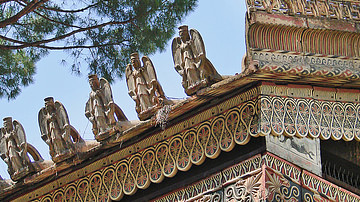
The Villanovan Culture flourished during the Iron Age in central Italy from c. 1000 to c. 750 BCE. It was a precursor of the Etruscan civilization, although the two populations are actually the same and the term Villanovan should not imply a separate people. Rather, the Villanovan culture is a label of convenience used by historians and archaeologists to describe the Etruscans in their formative years during the Iron Age.
Origins & Evolution
The name Villanovan derives from that of the estate owned by Giovanni Gozzadini near Bologna on which excavations were first made in 1853 CE. Eventually, traces of the Iron Age Villanovan culture, principally in the form of cemeteries, were discovered over a wide area of western central Italy and part of the north.
Between c. 1100 and 900 BCE, in a period known as the Proto-Villanovan, the culture prospered based on agriculture (cereals and legumes), hunting and animal husbandry (sheep, goats, cattle, and pigs). Central Italy also had an abundance of copper and iron. These benefits led to an increase in population, urbanisation, and social stratification, leading to the Villanovan culture proper. Settlements developed on easily defendable plateaus such as at Cerveteri, Tarquinia, Veii, and Vulci, or on hilltops as seen at Populonia and Chiusi. All of these Villanovan villages would eventually become important Etruscan towns.
Villanovan Housing
Housing – rectangular, oval, and circular – was made of wattle and daub or sun-dried mud brick with wooden posts for support and thatch roofs with projecting eaves. In many cases, the holes for the posts and trenches cut into the foundation rock to support the walls remain in situ. Huts vary in size from the smallest, which would have housed a single family, to the larger rectangular type measuring up to 13 x 7 metres and so big enough for up to 10 people. Some huts had large pottery jars for food storage sunk into their floors, and there are also rock-cut drainage channels around buildings to drain off rainwater which was collected in communal reservoirs.
Models of the houses were made to contain the ashes of the deceased, and perhaps imitating real architecture, some of these have decoration on the exterior walls of geometric patterns and an aperture above the door for releasing smoke. They also have roof decorations, probably imitating the terracotta additions so typical of later Etruscan architecture but also carved from wood.
Metalwork, Migration & Trade
The horse was especially important to these peoples, as seen in the many finds of horse fittings and frequent representations in art. The quality of metalwork in bronze and pottery suggest a class of artisans dedicated to their production. Higher quality grave goods in some burials indicate the beginnings of a societal elite. A belief in an afterlife is suggested by the presence of miniaturised everyday items and tools – usually knives, weapons and armour for men, and weaving paraphernalia for women, although, in some cases vice-versa, suggesting a more active role for women in Villanovan society and the possibility that men, too, made clothing. As towns prospered, populations increased as seen in the expansion of cemeteries. A consequence was a greater competition for resources and land between towns, and many created new colonies to the north, south, and west of central Italy.
Evidence of trade between Villanovan centres is seen in finds of centre-specific manufactured goods discovered in contemporary towns. The culture was also in contact with the wider Mediterranean via the arrival of Greek settlers (especially Euboeans) in the mid-8th century BCE. These colonists were eager to exploit the mineral rich region of what would become Etruria. Bronzeworks also indicate contact with Sardinia, central Europe, and the Balkans. These links brought about a more advanced metallurgy, and the presence of Greeks specifically is attested by many finds of Greek pottery as well as local pottery made in imitation of it.
Archaeological Finds
Villanovan cemeteries, located on hilltops or ravines just outside the community, contain burials of cremated remains in urns which are biconical (two vases with one smaller one acting as a lid for the other) and often carry simple incised decoration of geometric patterns, whirls, and swastikas, or even simple human 'stick' figures. Some urns have metal strips applied as decoration using lead or tin. One rarer type of urn, instead of a ceramic lid, has a bronze helmet on top with an impressive angular crest and embossed decoration. The urns were placed in shallow pits and accompanied by goods, as mentioned above.
A later type of burial was inhumation in trench tombs, sometimes with the body placed in a wooden or stone sarcophagus. Some such coffins at Populonia contained couples, and the same site has the first evidence of chamber tombs. Built in the late 9th century BCE using limestone slabs, they are the precursor of the more ambitious Etruscan tombs from the following century. Such lavish burial practices for only a few members of the community indicate a more complex society and separate elite class. In northern Villanovan settlements, such as near Bologna, tomb markers were made of stone and carved with reliefs. Typically with a rectangular base and circular top portion, they show scenes with animals, sphinxes, and geometric patterns. Depictions on these and other Villanovan artefacts of a 'Mistress of the Animals' – a female holding a quadruped in each hand – suggest a female nature deity was the focus of any religious practices.

Pottery was made by hand, not on the wheel, and used unpurified clay fired at a low temperature producing the primitive wares known as impasto. Bronze goods include belts, buckles (some with inlaid glass beads), pins, sewing needles, spindles, loom weights, bracelets, earrings, urns, razors, cuirasses, shields, helmets, and arrowheads (often miniaturised). Jewellery other than bronze pieces includes gold hair spirals; earrings and fibulas made from Baltic amber; and necklaces with beads made from bone, faience, and striped blue and white glass paste.
Analysis of the cremated and buried remains at Villanovan sites has revealed that life expectancy was no more than 50 years of age and the diet was generally short of protein. More vegetables were eaten than meat, but the range of foodstuffs consumed included fruit, nuts, fish, peas, broad beans, barley, and emmer. The latter was roasted, pounded, and boiled into a porridge to become the staple dish of the region.
Maturity to Etruscan Culture
The Villanovan culture, as we have seen, underwent what is known as an 'orientalising' process where art and culture were influenced by contact with Greece, Phoenicia, and the Near East. From here the people of central Italy matured into the Etruscan culture proper; first in the south and then northwards, and from coastal areas to inland settlements. There is no evidence of a migration of peoples or warfare in the region at this time and so the rather unfortunate name of Villanovan Culture would, perhaps, be better termed Proto-Etruscan. This process of cultural evolution, datable by grave goods, was complete by the early 7th century BCE in the south of Etruria. In parts of northern Italy (around the Po Valley), more isolated from the wider Mediterranean, the Villanovan culture would persist until the 6th century BCE. The Etruscans would go on to prosper until the 2nd century BCE and their conquest and eventual cultural assimilation by the Romans.











